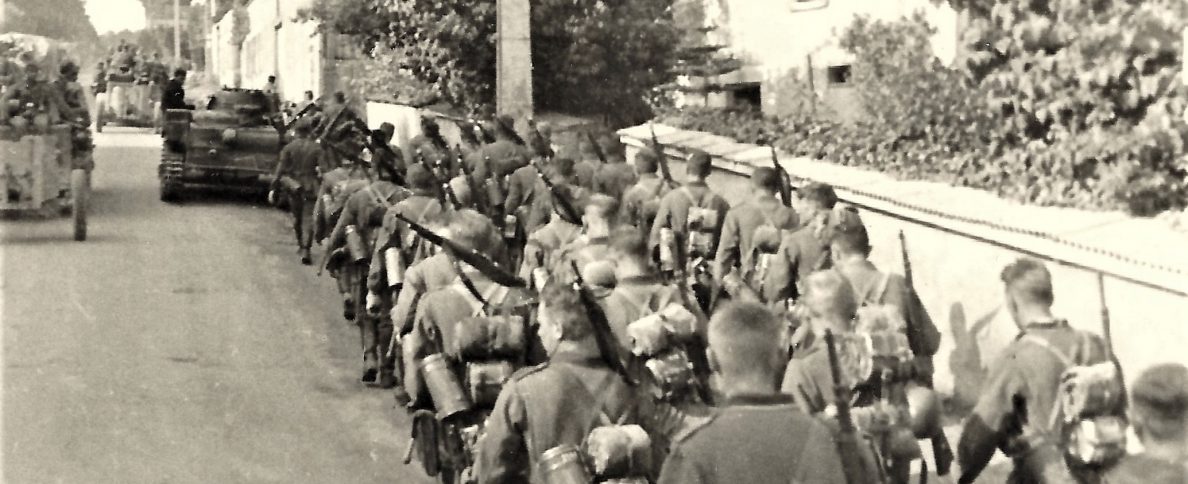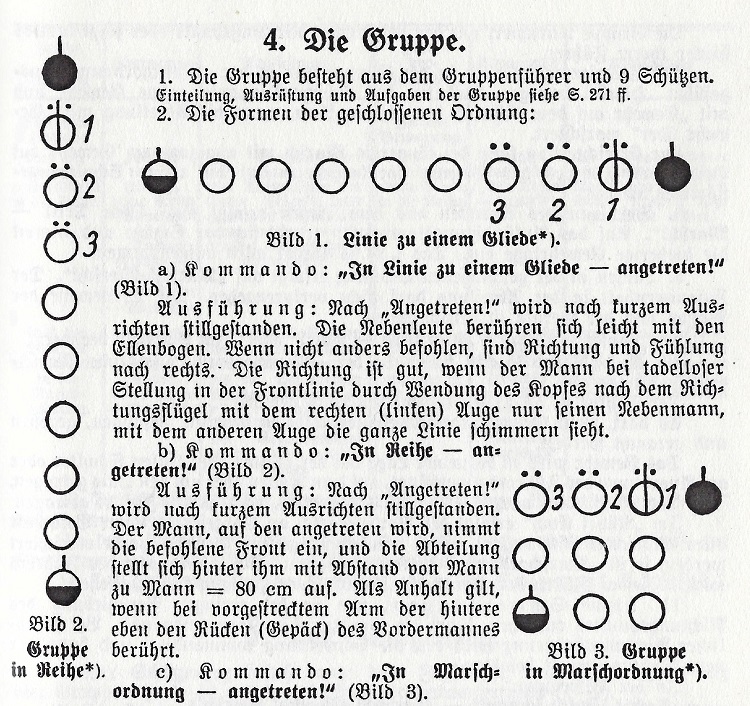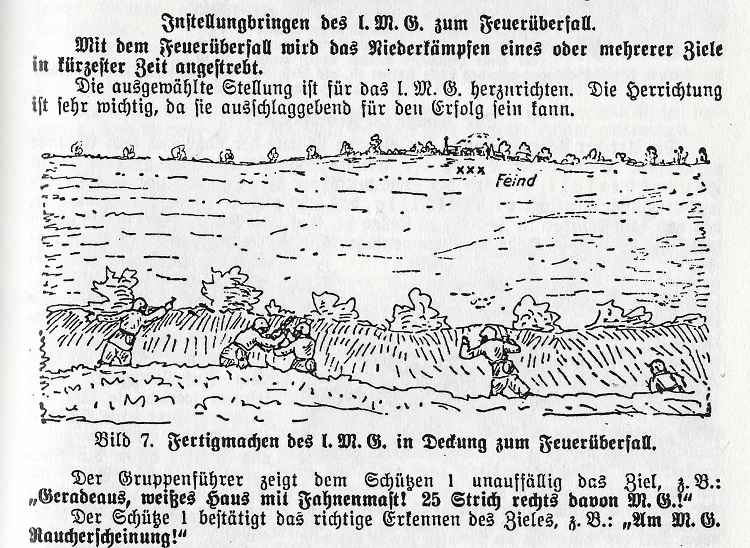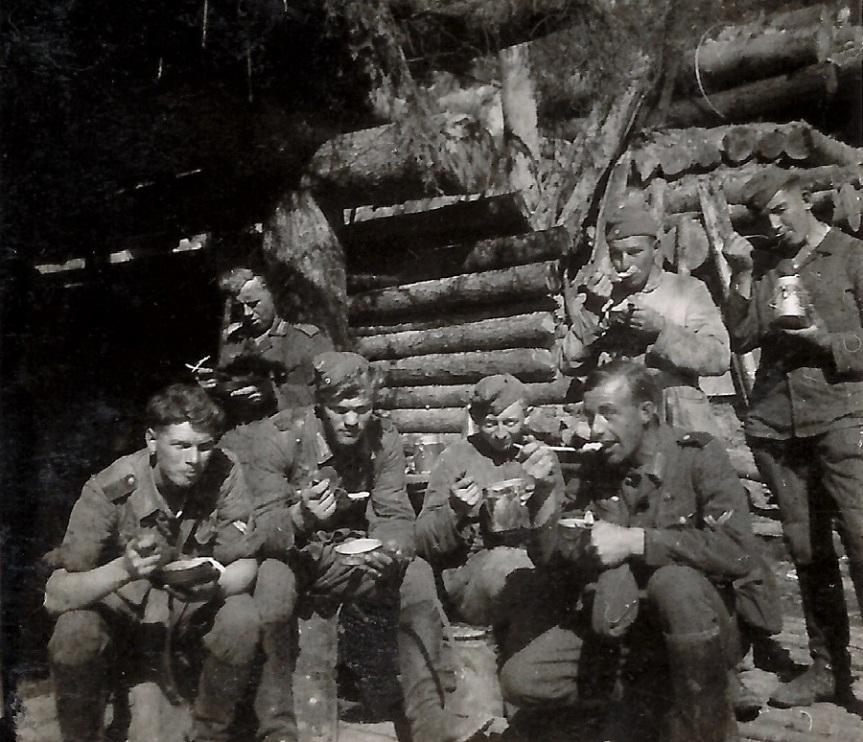The next building block in a military unit is the platoon, or Zug in German. It’s usually composed from four squads, numbering about 40 soldiers. The 1940 Heer infantry platoon was slightly larger at 48 enlisted men and NCOs, led by one officer (a Leutnant or Oberleutnant). There were four squads of ten men each (see the previous post), a three-man 5 cm mortar team, and the platoon headquarters with two messengers (Melder), one stretcher bearer (Krankenträger), one musician (Spielmann – a rifleman who was also a member of the regimental or divisional band), and the platoon commander (Zugführer) and his deputy (a senior NCO).
 The rifle platoon as outlined in Reibert’s 1940 manual “Der Dienstunterricht im Heere”.
The rifle platoon as outlined in Reibert’s 1940 manual “Der Dienstunterricht im Heere”.
With four machine guns, the platoon had pretty formidable firepower. The standard US platoon usually had just one MG, drawn from the company’s heavy weapons platoon, and the British platoon had three Bren light machine guns (fed with box magazines, limiting the volume of fire available). The light mortar, on the other hand, was largely useless, and it was eliminated in the leaner 1944 organization platoon. The platoon had one horse-drawn wagon for the heavier weapons and the baggage.
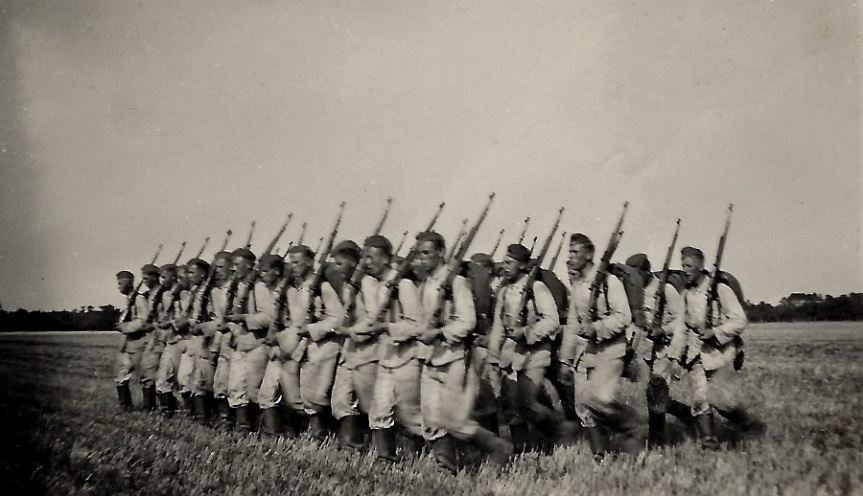
The 1944 platoon fielded just 33 men (29 enlisted men, three NCOs, and the platoon commander), organized into three squads and the platoon HQ. The squads had nine men each (1 NCO, 8 EM), and the HQ with the commander, two messengers, a stretcher bearer, and two riflemen whose function my sources fail to mention. There were more automatic weapons, and the MG42 with its higher rate of fire was more or less standard, but it was still a downgrade, as it wasn’t uncommon for the platoons to lack up to a third of their manpower.

When the platoon was at full strength, it was a versatile fighting force. With the four-squad setup, it could be divided into two equally sized troops, the other half led by the deputy platoon commander. The officers were taught the importance of taking the initiative and press the attack. It was a greater sin to wait for orders and perhaps lose a tactical advantage, than to make a quick decision and act on it despite it not being optimal in order to gain success. This aggressiveness came at a price, though, as the attrition rate for NCOs and junior officers was high. Still, it was contrary to the more rigid structures of the US, British and Soviet armies, and not corresponding with the prejudiced idea that the Germans were unimaginative and lacking initiative. For first-line troops, especially after they had gained some combat experience, nothing could be more wrong.
The German infantry company will be covered in a future post.

